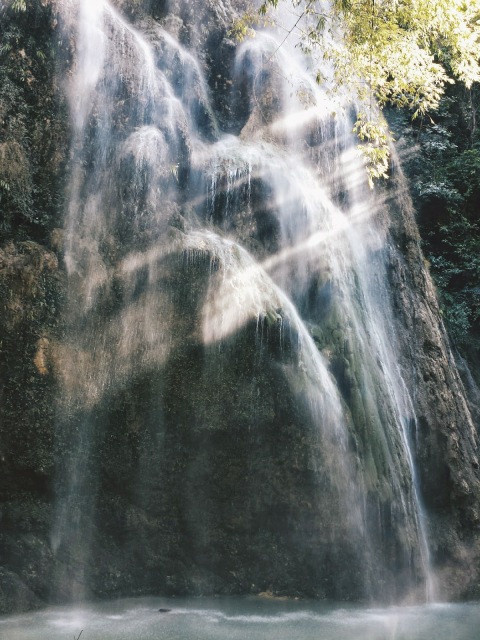Environmentalists and conservationists reading this are going to shake their heads knowing that there’s one more tourist who swam with whale sharks in Oslob. For those planning to do the same, I’m not going to discourage you to do it. But you should know that according to a study by LAMAVE Foundation, a non-profit organization that conducts research on the ocean and its inhabitants, tourists shouldn’t support swimming with the whale sharks or butanding in Oslob because the practices of the boatmen modify the behavior and migration patterns of whale sharks which might affect their survival in the long run.
I’m not trying to be activist-y about the whole thing since that would be hypocritical of me. But I’ve decided not to provide details of the activity that will help you plan your itinerary. You’ll have to check out other travel blogs for that. I also won’t include photos of me swimming with a butanding to avoid glamorizing it.
Generally, I don’t mind sea creatures as long as they don’t come near me so I was excited and anxious to see a butanding up close. Our boatman said that the whale sharks we saw that day were young. The baby whale sharks were around twelve feet long and I could’ve easily fit in their mouths so an adult whale shark would be legit scary.
Small boats carrying tourists were lined up in one row while one boat guided the whale sharks back and forth along the row. I followed the whale sharks as they swam which wasn’t easy. They created a strong current behind them every time they swung their tail fins and the fins I rented were pretty useless. I panicked when they did a 180-degree turn forcing me to be face to face with them. But they didn’t care for anyone except the boatman feeding them plankton. It was amazing to see such huge creatures acting like domesticated pets.
I would love to swim with whale sharks in the “proper, sustainable way.” In other butanding watching sites, there’s only a certain time of the year when you could spot them. But in Oslob, there’s a hundred percent chance of a sighting. And even if you chance upon them in those other sites, you still need, at least, amateur diving skills to get the same experience as the one in Oslob. So I understand why tourists would flock to Oslob for convenience.
After swimming with whale sharks, we went to Tumalog Falls. The motorcycle ride to and from the falls cost Php 150 while the entrance fee is Php 20. You could ride a motorcycle from the entrance to the falls for an additional fee. We decided to walk since the administrator said it was only 500 meters away.
Tumalog Falls was majestic and somewhat otherworldly. My boyfriend said it looked like Rivendell, where the elves in Lord of the Rings lived. The fine, misty water fell in a shallow and muddy water basin. It looked magical especially when beams of light escaped from the leaves of the surrounding trees and hit the water.
We washed off the salt from our bodies in the refreshing, cold water. After a while, we were freezing. Also, it got a little creepy when we had the falls all to ourselves so we went back to our inn, ate breakfast, and left for the city.
The whale sharks distinguish Oslob from other municipalities in Cebu that have better beaches and food so I don’t know if Oslobanons are in any particular hurry to find a more sustainable way of managing the activity, especially if that would mean a decrease in their income. Tumalog Falls is not enough to entice people to visit the area because, aside from a lack of facility, the water basin is too muddy to swim in. In the end, it’s going to be an issue of the preservation of the butanding against the livelihood of the locals. Best of luck, Oslob.
Read the first part of my Oslob trip.
You might also want to read Welcoming summer at Bantayan Island; Bantayan Island Day 2: The Quest for Caves



